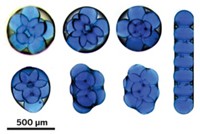Advertisement
Grab your lab coat. Let's get started
Welcome!
Welcome!
Create an account below to get 6 C&EN articles per month, receive newsletters and more - all free.
It seems this is your first time logging in online. Please enter the following information to continue.
As an ACS member you automatically get access to this site. All we need is few more details to create your reading experience.
Not you? Sign in with a different account.
Not you? Sign in with a different account.
ERROR 1
ERROR 1
ERROR 2
ERROR 2
ERROR 2
ERROR 2
ERROR 2
Password and Confirm password must match.
If you have an ACS member number, please enter it here so we can link this account to your membership. (optional)
ERROR 2
ACS values your privacy. By submitting your information, you are gaining access to C&EN and subscribing to our weekly newsletter. We use the information you provide to make your reading experience better, and we will never sell your data to third party members.
Materials
Multiple Components Individually Wrapped
June 9, 2008
| A version of this story appeared in
Volume 86, Issue 23

An electrospray method developed by Yong Zhao, Lei Jiang, and coworkers at the Chinese Academy of Sciences in Beijing can trap and keep separate multiple components in a single cell-like capsule in one step (J. Am. Chem. Soc., DOI: 10.1021/ja801803x). This technique could lead to applications in drug delivery, materials science, and food science. The researchers first embedded multiple capillaries into a needle to form a compound nozzle. They then fed a viscous inorganic “shell” fluid through the needle and up to four different organic “core” fluids through the capillaries. The shell and core fluids formed a compound fluid as they met at the nozzle’s outlet. Under an applied voltage to the nozzle, the compound fluid stretched and fragmented into a spray of charged droplets that formed into larger capsules. Droplets of each of the core fluids ended up with a “jacket” of shell fluid, which kept them separate from the other components in each capsule. In one test, the researchers used their one-step apparatus to separately encapsulate three different glycerol-based fluid droplets in a photopolymer shell. Previous methods to enclose multiple components in this manner required numerous steps and couldn’t always keep the components separate, the researchers note.



Join the conversation
Contact the reporter
Submit a Letter to the Editor for publication
Engage with us on Twitter